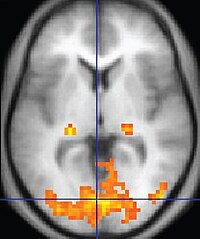
Magnetic resonance fingerprinting review part 2: Technique and directions
Sign Up to like & getrecommendations! Published in 2019 at "Journal of Magnetic Resonance Imaging"
DOI: 10.1002/jmri.26877
Abstract: Magnetic resonance fingerprinting (MRF) is a general framework to quantify multiple MR‐sensitive tissue properties with a single acquisition. There have been numerous advances in MRF in the years since its inception. In this work we… read more here.
Keywords: resonance; fingerprinting review; magnetic resonance; review part ... See more keywords

Magnetic resonance fingerprinting: from evolution to clinical applications
Sign Up to like & getrecommendations! Published in 2020 at "Journal of Medical Radiation Sciences"
DOI: 10.1002/jmrs.413
Abstract: In 2013, Magnetic Resonance Fingerprinting (MRF) emerged as a method for fast, quantitative Magnetic Resonance Imaging. This paper reviews the current status of MRF up to early 2020 and aims to highlight the advantages MRF… read more here.
Keywords: evolution; resonance; magnetic resonance; tissue ... See more keywords

Simultaneous estimation of PD, T1, T2, T2*, and ∆B0 using magnetic resonance fingerprinting with background gradient compensation
Sign Up to like & getrecommendations! Published in 2019 at "Magnetic Resonance in Medicine"
DOI: 10.1002/mrm.27556
Abstract: This study aims to estimate PD, T1, T2, T2*, and Δ B0 simultaneously using magnetic resonance fingerprinting (MRF) with compensation of the linearly varying background field. read more here.
Keywords: resonance; compensation; magnetic resonance; using magnetic ... See more keywords

Spiral blurring correction with water–fat separation for magnetic resonance fingerprinting in the breast
Sign Up to like & getrecommendations! Published in 2019 at "Magnetic Resonance in Medicine"
DOI: 10.1002/mrm.27994
Abstract: Magnetic resonance fingerprinting (MRF) with spiral readout enables rapid quantification of tissue relaxation times. However, it is prone to blurring because of off‐resonance effects. Hence, fat blurring into adjacent regions might prevent identification of small… read more here.
Keywords: correction water; blurring correction; resonance; magnetic resonance ... See more keywords

Water–fat separation in spiral magnetic resonance fingerprinting for high temporal resolution tissue relaxation time quantification in muscle
Sign Up to like & getrecommendations! Published in 2020 at "Magnetic Resonance in Medicine"
DOI: 10.1002/mrm.28143
Abstract: To minimize the known biases introduced by fat in rapid T1 and T2 quantification in muscle using a single‐run magnetic resonance fingerprinting (MRF) water–fat separation sequence. read more here.
Keywords: quantification muscle; resonance; magnetic resonance; fat separation ... See more keywords

Magnetic resonance fingerprinting for simultaneous renal T1 and T2* mapping in a single breath‐hold
Sign Up to like & getrecommendations! Published in 2020 at "Magnetic Resonance in Medicine"
DOI: 10.1002/mrm.28160
Abstract: To evaluate the use of magnetic resonance fingerprinting (MRF) for simultaneous quantification of T1 and T2∗ in a single breath‐hold in the kidneys. read more here.
Keywords: breath hold; single breath; resonance; magnetic resonance ... See more keywords

Three‐dimensional high‐resolution T1 and T2 mapping of whole macaque brain at 9.4 T using magnetic resonance fingerprinting
Sign Up to like & getrecommendations! Published in 2022 at "Magnetic Resonance in Medicine"
DOI: 10.1002/mrm.29181
Abstract: Quantitative T1 and T2 mapping in non‐human primates with whole‐brain coverage is challenged by the requirement of sub‐millimeter resolution and the inhomogeneity of the transmit magnetic field (B1+) covering a large field of view. The… read more here.
Keywords: magnetic resonance; resonance fingerprinting; macaque brain; brain ... See more keywords

Multi-frequency interpolation in spiral magnetic resonance fingerprinting for correction of off-resonance blurring.
Sign Up to like & getrecommendations! Published in 2017 at "Magnetic resonance imaging"
DOI: 10.1016/j.mri.2017.07.004
Abstract: Magnetic resonance fingerprinting (MRF) pulse sequences often employ spiral trajectories for data readout. Spiral k-space acquisitions are vulnerable to blurring in the spatial domain in the presence of static field off-resonance. This work describes a… read more here.
Keywords: resonance; magnetic resonance; correction; multi frequency ... See more keywords

MRF-ZOOM for the unbalanced steady-state free precession (ubSSFP) magnetic resonance fingerprinting.
Sign Up to like & getrecommendations! Published in 2019 at "Magnetic resonance imaging"
DOI: 10.1016/j.mri.2019.11.010
Abstract: In magnetic resonance fingerprinting (MRF), tissue parameters are determined by finding the best-match to the acquired MR signal from a predefined signal dictionary. This dictionary searching (DS) process is generally performed in an exhaustive manner,… read more here.
Keywords: resonance fingerprinting; mrf zoom; mrf; magnetic resonance ... See more keywords

Streamlined magnetic resonance fingerprinting: Fast whole-brain coverage with deep-learning based parameter estimation
Sign Up to like & getrecommendations! Published in 2021 at "NeuroImage"
DOI: 10.1016/j.neuroimage.2021.118237
Abstract: Magnetic resonance fingerprinting (MRF) is a quantitative MRI (qMRI) framework that provides simultaneous estimates of multiple relaxation parameters as well as metrics of field inhomogeneity in a single acquisition. However, current challenges exist in the… read more here.
Keywords: estimation; brain coverage; parameter estimation; magnetic resonance ... See more keywords

Greedy approximate projection for magnetic resonance fingerprinting with partial volumes
Sign Up to like & getrecommendations! Published in 2018 at "IEEE Transactions on Computational Imaging"
DOI: 10.1088/1361-6420/ab356d
Abstract: In quantitative Magnetic Resonance Imaging, traditional methods suffer from the so-called Partial Volume Effect (PVE) due to spatial resolution limitations. As a consequence of PVE, the parameters of the voxels containing more than one tissue… read more here.
Keywords: resonance; greedy approximate; magnetic resonance; pve ... See more keywords